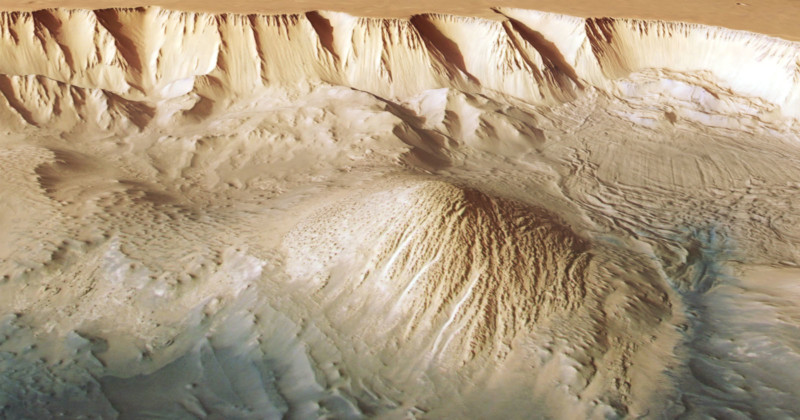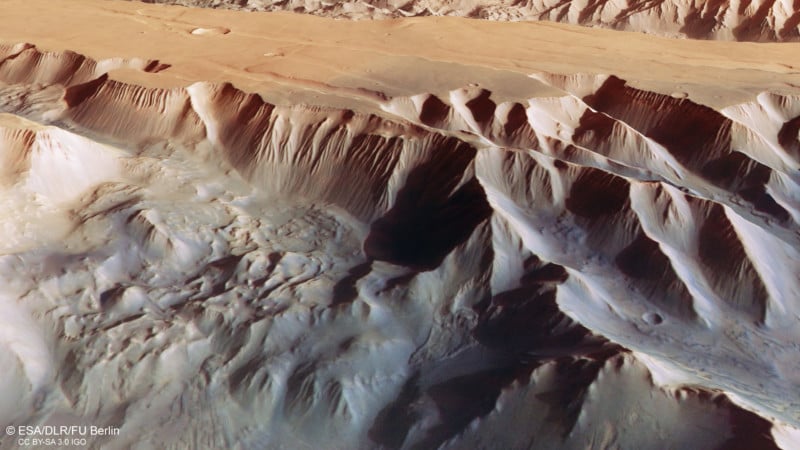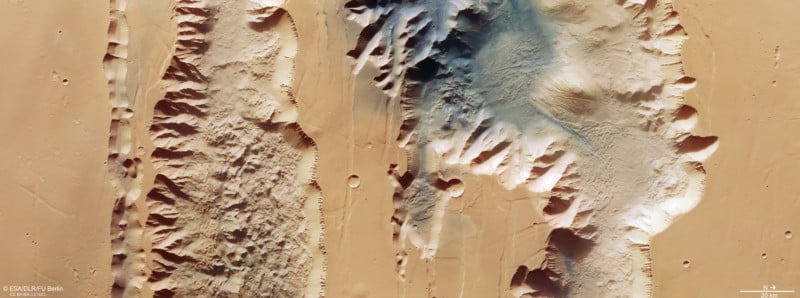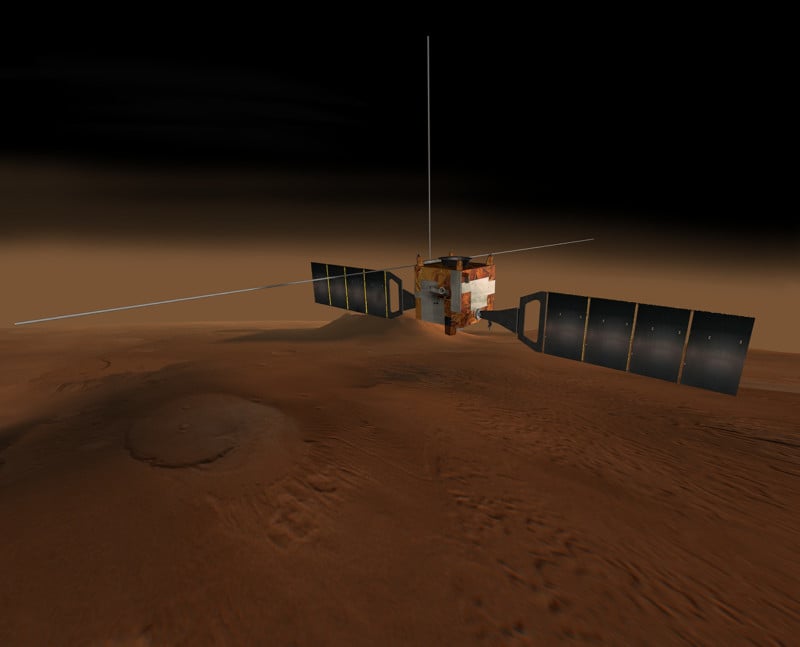
The European Space Agency has released stunning images of the enormous Valles Marineris canyon taken by the Mars Express.
Valles Marineris cuts across Mars like the Grand Canyon cuts across the United States, except the Martian canon is 20 times wider and five times deeper than the American landmark.
The Martian canyon is 2,485 miles long, over 124 miles wide, and more than four miles deep, dwarfing the Grand Canyon. That means the Valles Marineris would stretch all the way from New York City on the east coast of America to Los Angeles on the west coast. It is the largest canyon in the entire Solar System.
While scientists know that the Colorado River formed the Grand Canyon five million years ago by eroding away rock, researchers are unsure how the Valles Marineris was formed. One theory is that it is due to tectonic plates drifting apart causing a huge “crack”, but another is the belief it was created by ice melting into rivers. While a further theory is that the canyon is actually a large channel made by lava flowing from the flank of Pavonis Mons.


The images captured by the European Space Agency (ESA) show two trenches that form part of western Valles Marineris. Known as the Tithonium Chasma, the photos do not do the depth of the chasm justice as the Alp’s tallest mountain, Mont Blanc, would still not reach the top ridge.
At the top of Tithonium Chasma, a patch of dark sand — that may have come from a nearby volcanic region — brings color contrast to the image. Next to the dark sand dunes are light-toned mounts that rise more than 9,800 feet in height. For perspective, Mount Hesperus in Alaska rises to 9,828 feet.
The Mars Express

The Mars Express, launched in 2003, has a High Resolution Stereo Camera which has a resolution of about 10 meters. Selected areas are imaged at a two-meter resolution and one of the camera’s greatest strengths is its pointing accuracy achieved by combining images at two different resolutions. It can also 3D-image, which reveals the topography of Mars in full color.
So-called because of its relatively short interplanetary voyage as it was launched when the orbits of Earth and Mars brought the two planets closer than they had been in about 60,000 years.
Author: Matt Growcoot
Source: Petapixel



